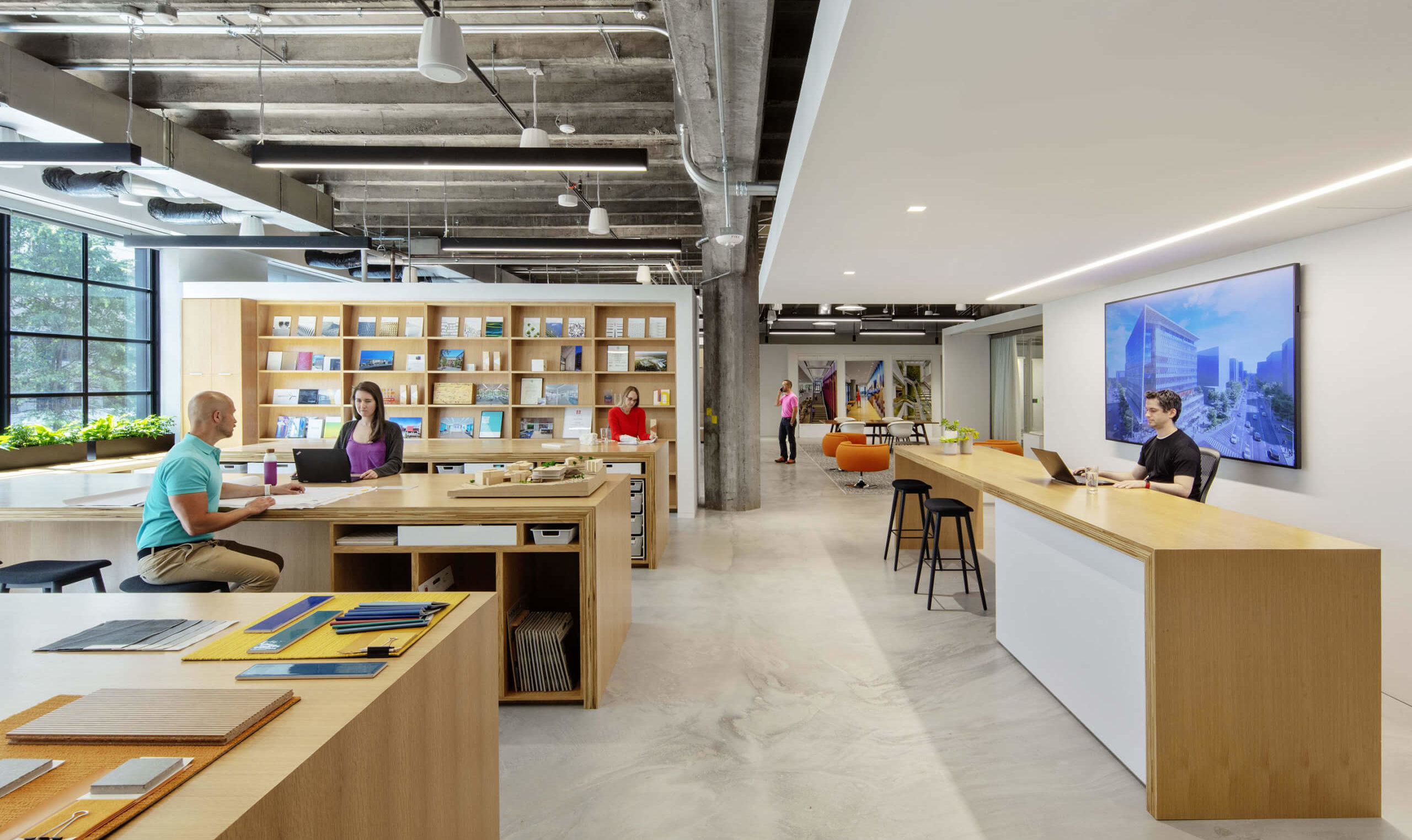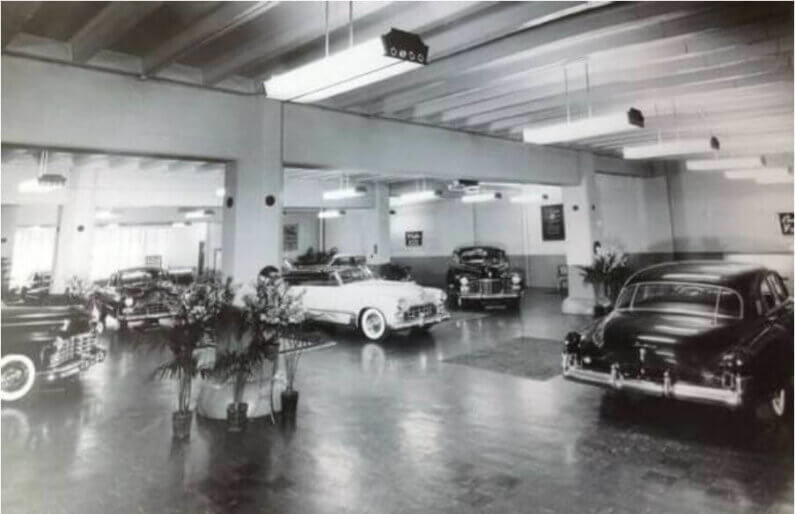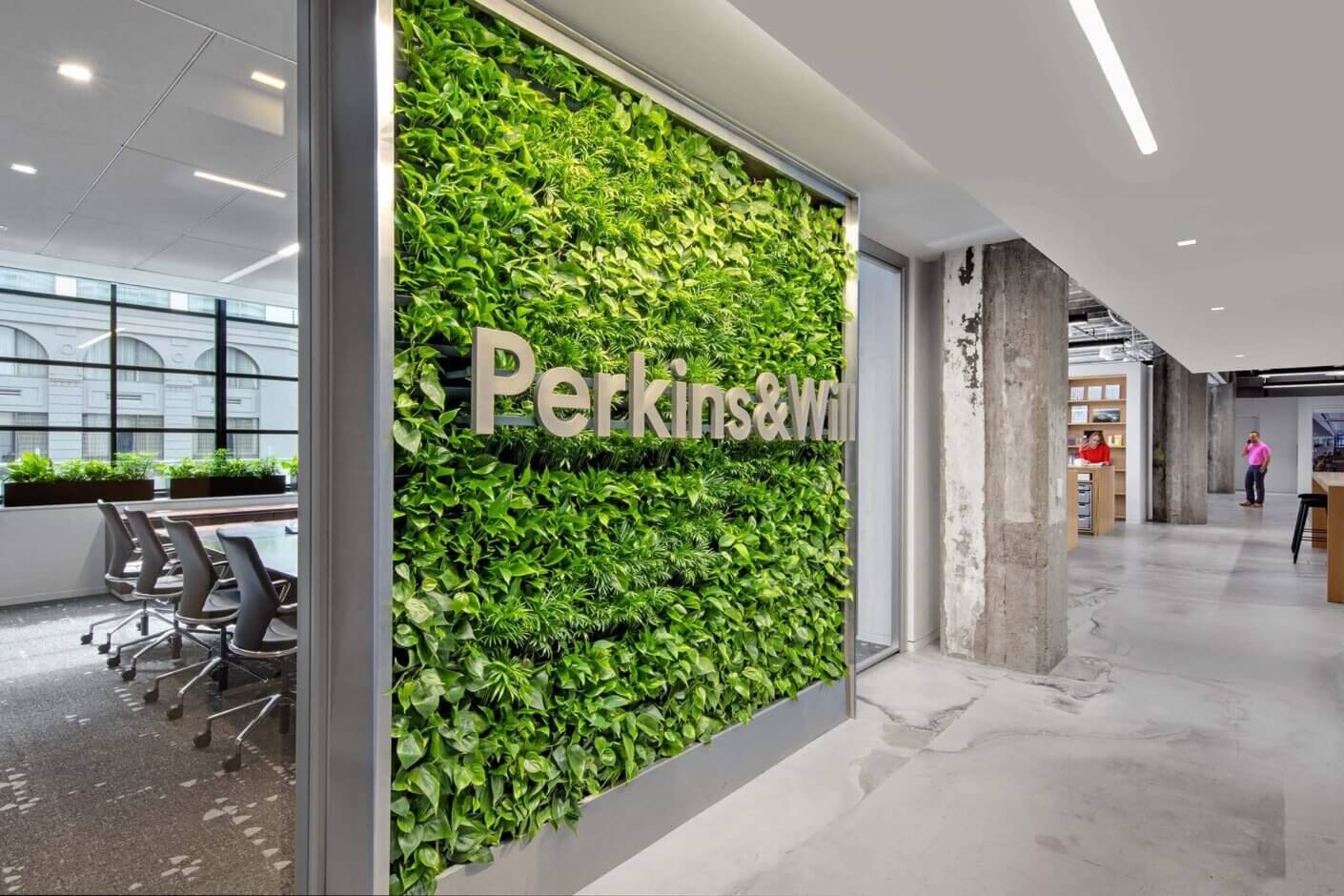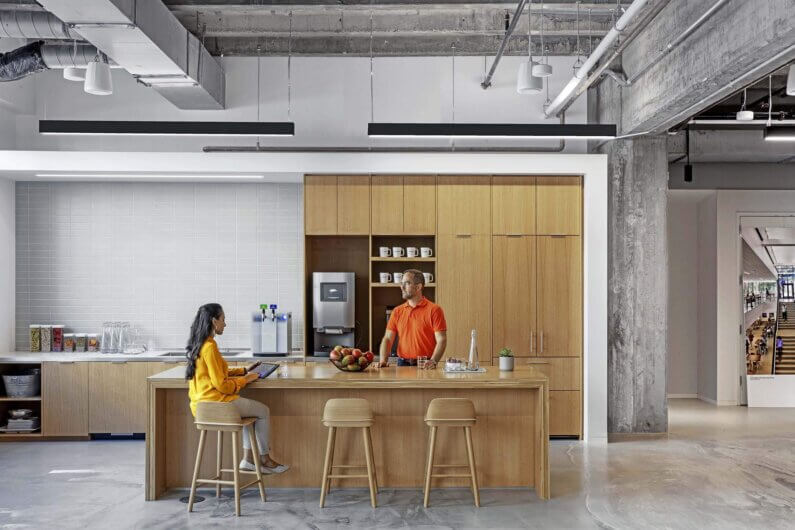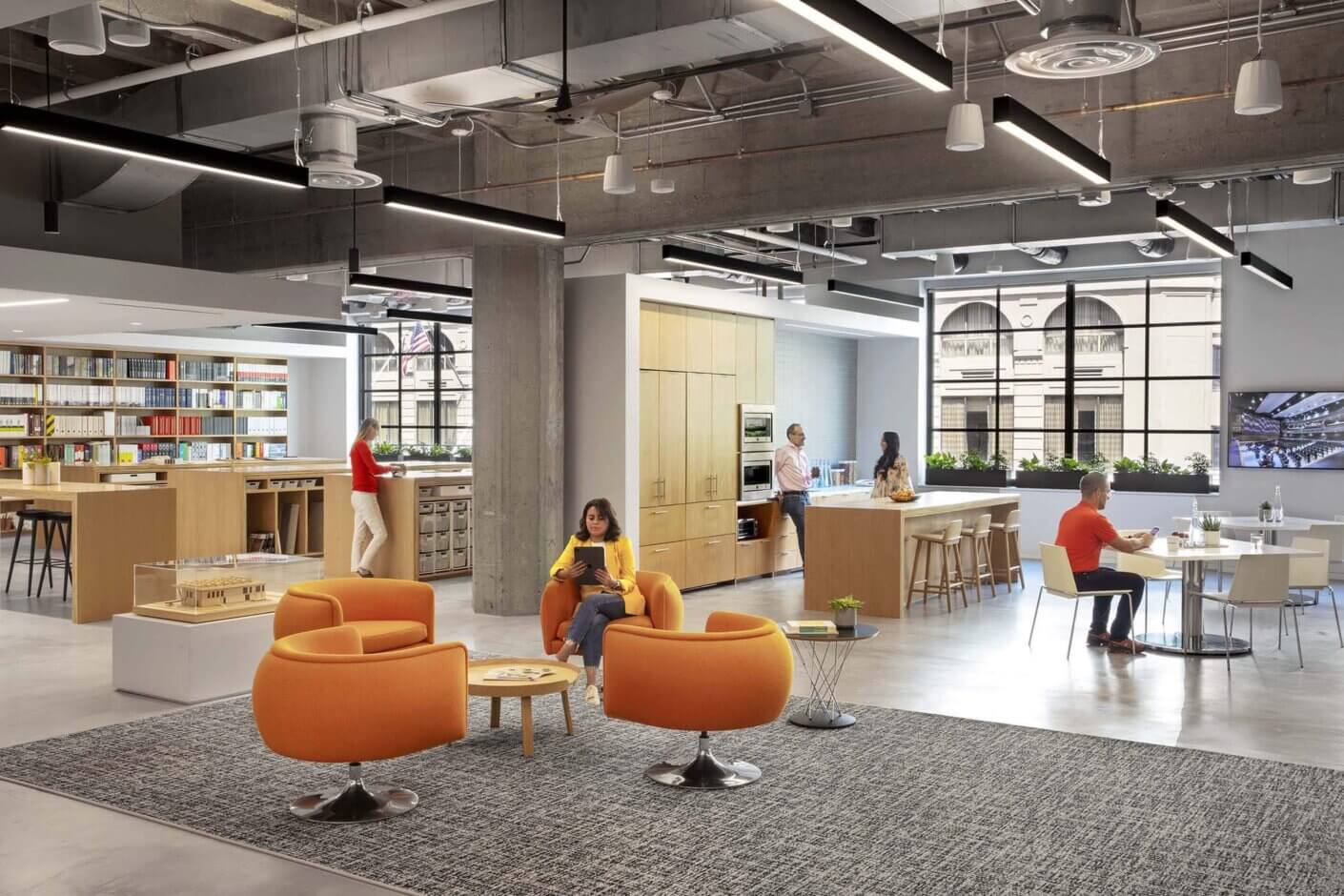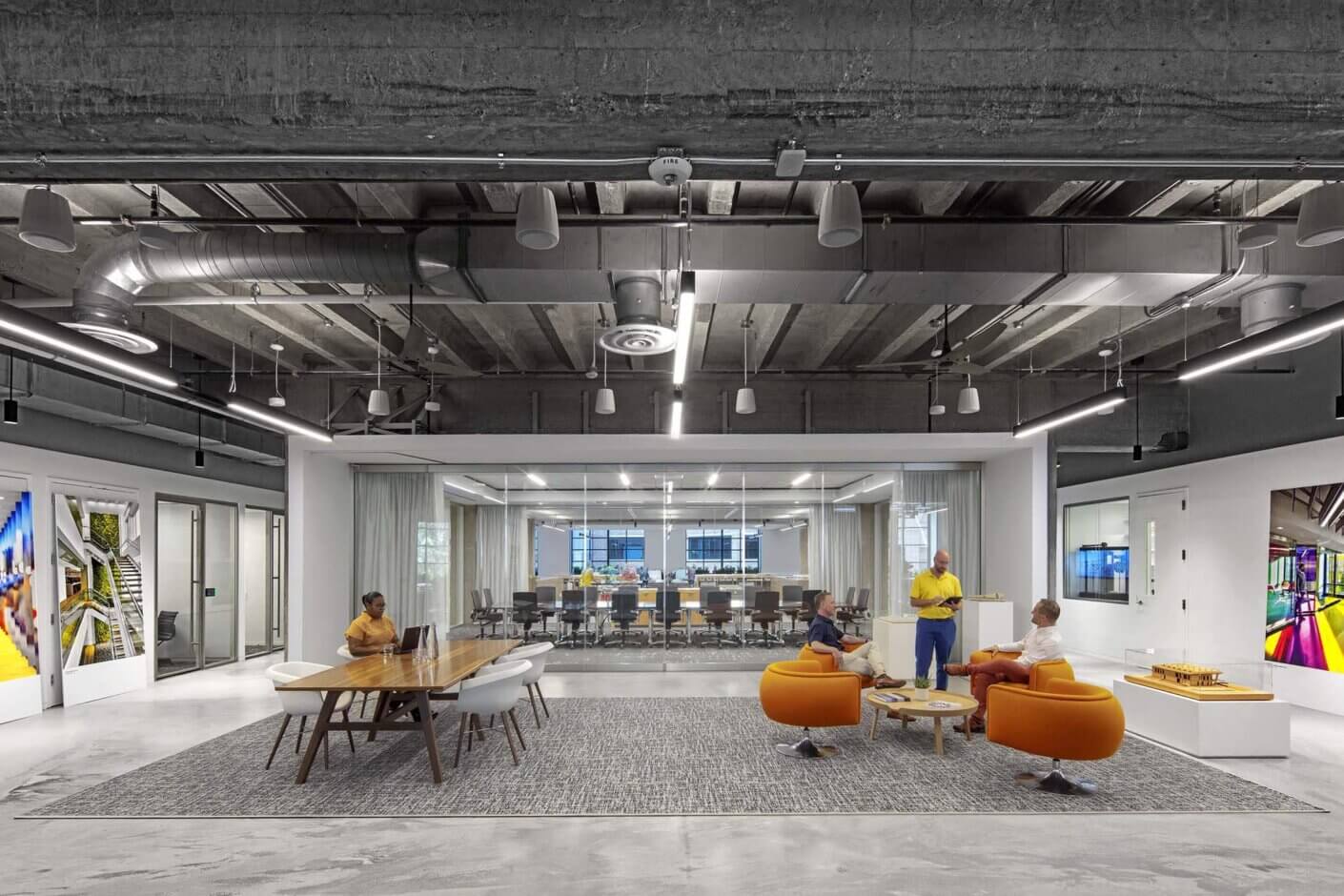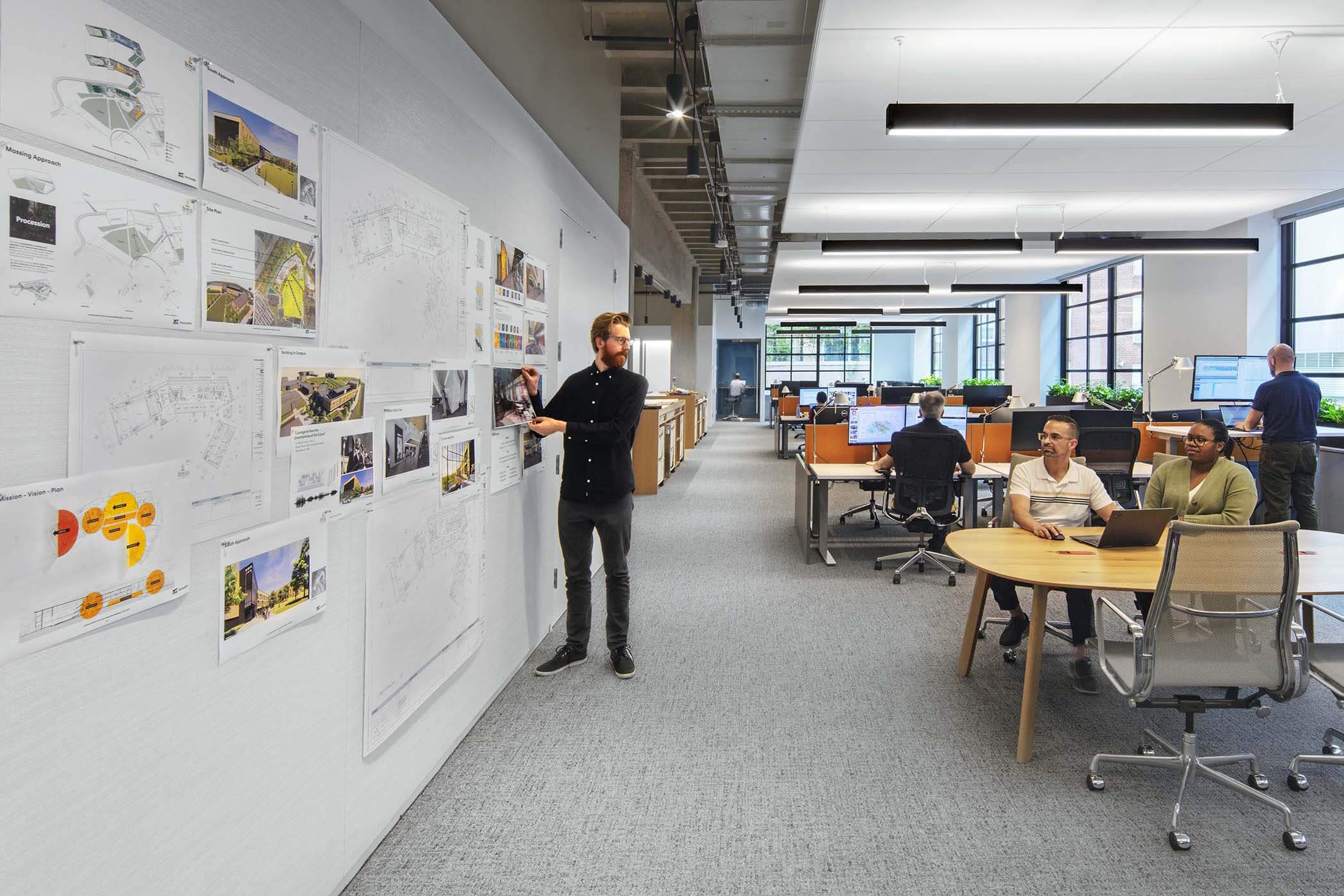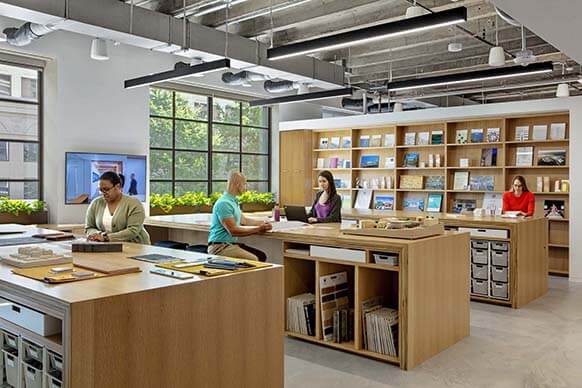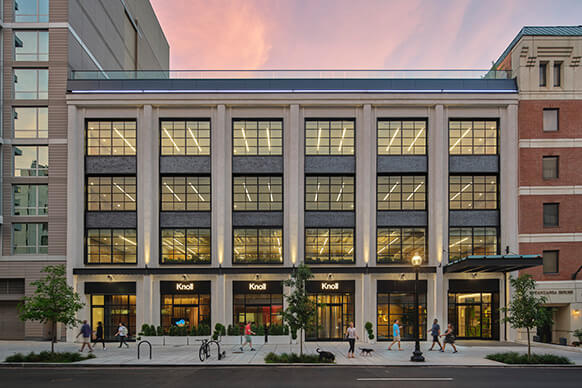WASHINGTON, D.C.— Perkins&Will is building on its longstanding commitment to environmental stewardship with the completion of its new Washington, D.C. workplace. The studio, designed by a Perkins&Will D.C. team, reduces embodied carbon by 56% compared to a typical office space. This aligns with the practice’s ambitious strategy—and pledge—to achieve meaningful carbon reduction with every office it designs by 2030.
Located at 1222 22nd St. NW, the new studio is an example of responsible design, embodying Perkins&Will’s commitment to Living Design—a research-informed approach to design that holistically addresses sustainability, resilience, well-being, and equity. Productivity and flexibility through a variety of work areas also support hybrid work configurations for Perkins&Will colleagues and clients, alike.
“Especially in a time of continued uncertainty, we’re ready to help our clients navigate changes to their new and existing spaces because we have experienced it ourselves,” said Chris Morrison, principal and managing director of Perkins&Will’s Washington, D.C. studio. “Our commitment to cutting embodied carbon also puts us ahead of the curve in terms of employing solutions to mitigate climate change.”
